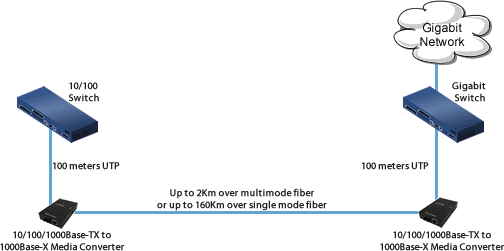Avoiding common mistakes in fiber-optic network deployment - Part One
The networking landscape has changed, and businesses need to invest in high-performance network capabilities to support a diverse range of operations. This has prompted many companies to invest in fiber-optic infrastructure and has also created a sense of urgency around making the upgrade. While it may be tempting to move quickly to adopt fiber networks, careful planning will prevent some significant problems.
Problem #1: Thinking that fiber is exclusive
One of the problems many businesses face when they rush into fiber-optic network deployment is thinking that optical equipment is exclusive to other forms of networking. While a high-performance network can be established by installing fiber cables and equipment, the process is expensive. Fiber based switches, routers and firewalls are generally three times more expensive than their copper based counterparts. Throwing away miles of installed copper is a waste. Instead of turning to a wholesale upgrade to fiber-optic equipment, businesses should consider systematically moving key parts of the network to an optical infrastructure, while keeping other parts of the network rooted in copper for the time being.
To do this, businesses should go through each department and identify its network needs. Areas that need data transmission distances over 100 meters, increased bandwidth and/or EMI (electromagnetic interference) protection are usually first in line for the upgrade to fiber. Once each part of the organization has been evaluated, companies can, department by department, upgrade to a fiber optic infrastructure where necessary. Copper based Ethernet equipment and cabling can continue to function reliably in other areas until it is deemed feasible in the upgrade timeline to reassess those departments.
In the past, this may have been challenging to accomplish. However, fiber to Ethernet Media Converter technology links fiber and copper infrastructures seamlessly, making the process relatively easy. Simply put, these small devices enable connections of UTP copper-based Ethernet equipment over a fiber optic link. This allows for a systematic transition to fiber for companies that want to take advantage of the benefits of fiber, without the cost of replacing their existing copper base devices and cabling all at once.
Combining a fiber and copper infrastructure does more than assuage the costs of installing new cables and equipment. It also serves to deliver the performance desired with the upgrade. Targeting trouble spots with a fiber-optic infrastructure can enable the network to flow smoothly and improve overall performance to whatever extent the company needs.

Problem #2: Creating migration roadblocks
Businesses that are in a rush to upgrade to a new optical network need to slow down and evaluate how they are going to establish the network. An investment of this size must be made carefully, or it runs the risk of becoming a roadblock in the future. It is important to establish the new network infrastructure in such a way that upgrades can be made relatively easily. It is critical not to become so focused on the current implementation that the future is not taken into consideration.

It is quite common for companies to have a combination of 10Mb Ethernet, Fast Ethernet and Gigabit Ethernet in their network. For example a company headquarters may be using a Gigabit backbone but the remote offices are still using 10 or 100MB Ethernet. Media Converters allows devices on the 10/100 Ethernet switch in the remote branch office to be connected over fiber optic lines to the Gigabit backbone at the headquarters.
Make a migration plan in advance and be sure to re-assess as you go along to ensure that today’s installation will not be a costly problem tomorrow.
Conclusion – Part 1
These are two of six issues that companies could face if they rush the process of fiber-optic migration. These problems could have a financial and operational impact on network performance and should all be taken into consideration when adopting new optical infrastructure. Part two of the series will address failing to utilize the latest technology features and the ignoring the benefits of network management.
Learn more about Perle Media Converters.